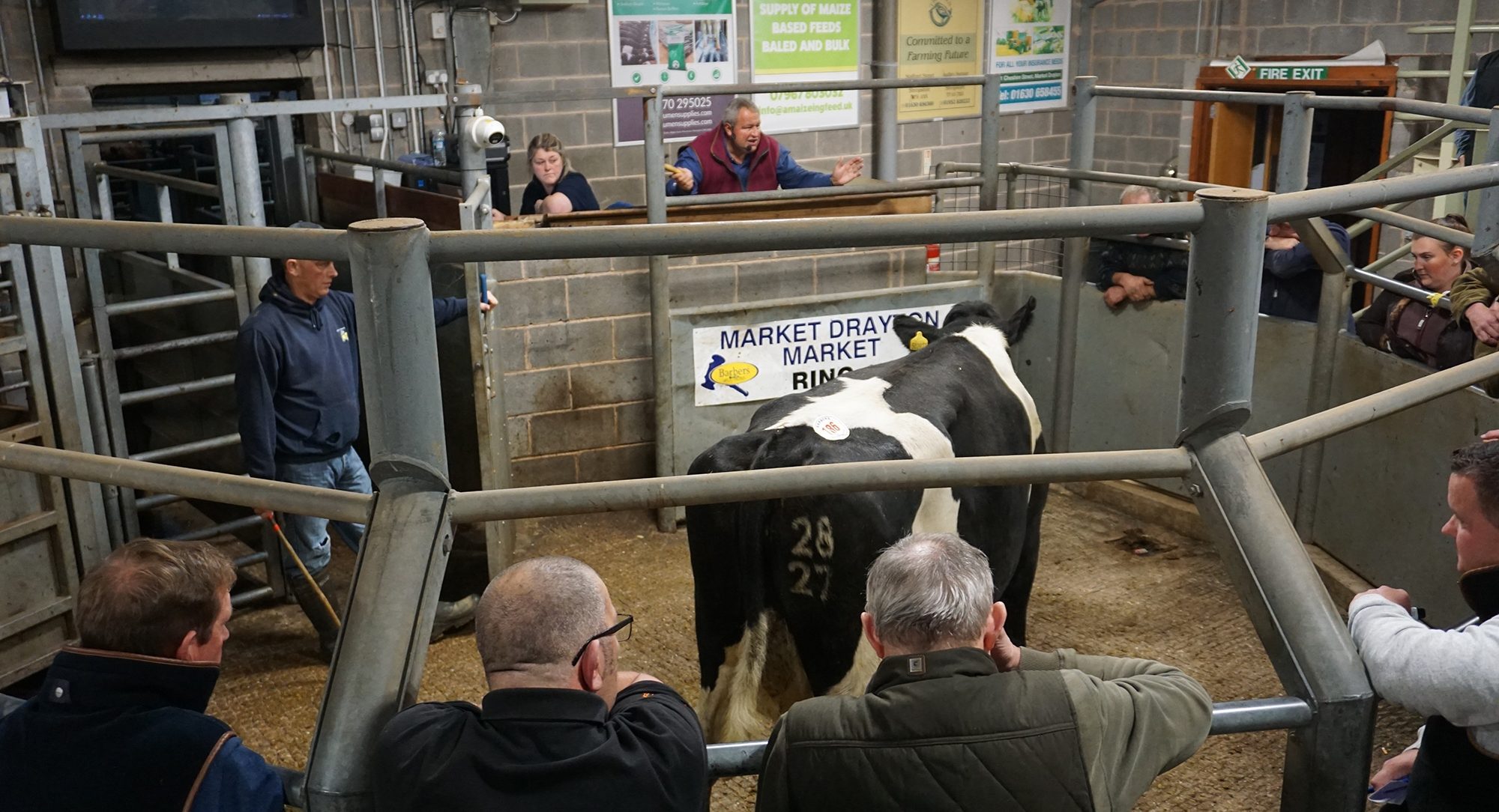Livestock markets across England and Wales are reporting an extraordinary cull cow trade, across both beef and dairy cows. Driven by tight numbers and a worldwide shortage of beef, the flying trade through the live sales ring is providing an opportunity for those dairy producers considering future herd decisions.
Cull cow averages across England and Wales rose dramatically in 2022 to £1055.09, more than £180 over the 2021 average of £873.31. Into the early part of 2023, the trend seems set fair, at least for the short to medium term.
“The cull cow trade is absolutely remarkable and appears to be, if anything, strengthening,” claims Darlington Farmers Auction Mart’s Stephen Dodsworth.
“Whilst our cast cow numbers are up on the whole, this rise is most likely due to the declining suckler herds across our region,” he says. “The number of dairy breeds sold is remarkably similar, yet the price is through the roof.”
A quick look at the averages for dairy bred cattle through the cast cows and OTM cattle ring at Darlington, for the first 10 weeks of the year over the past four years, paints a clear picture.
- 2020 – 182 sold to an average of £729.55
- 2021 – 187 sold to an average of £766.26
- 2022 – 227 sold to an average of £791.28
- 2023 – 224 sold to an average of £1107.12
“We now regularly see dairy bred cows at 190ppk plus, with 200ppk not unusual at all. Week after week the bigger dairy cows now sell to £1700 plus, so the cost of breeding / keeping / buying replacements is, in real terms, relatively cheap,” says Mr Dodsworth.
“This certainly encourages the vendors to sell anything which is not performing at its best, in turn reducing the average age of cows on farm and therefore also reduces the average age of those we are selling,” he adds.
In the south west, Sedgemoor Auction Centre has experienced similar record trade and staggering increases in averages across barren cows and cull bulls over the past 12 months.
Auctioneer Robert Venner explains, “Looking just at January and February this year, we have seen a 5% increase on the year in barren cows sold (393 to 374), at an increase of 27% in average value,” he says.
The average value in the first two months of 2023 was £1075.38, against £847.56 over the same period in 2022. Similar figures were recorded for cull bulls, with 8 sold in the first two months of 2022 at an average of £1165.76, and 18 (+125%) in the same period of 2023, at an average value of £1489.60.
“This also represents a 28% increase, and from the second half of last year we have continually seen records smashed for barren cows and cull bulls,” he adds.
Recent highlights include the Sedgemoor record for a Holstein barren cow at £1879 (27 Feb 2023). On the same date, an Angus cull bull reached a new record price of £2067.39, and a Limousin likewise setting a market record at 195.5ppk.
The previous week, Sedgemoor set a record for a Continental barren cow, with a Simmental reaching 228.5ppk.
Driving the trade
“The numbers have obviously been tight, and that is what has been driving the trade,” says prime cattle and OTM auctioneer Bernie Hutchison at Market Drayton Market.
“Globally there is a shortage of beef, there are certainly not the big volumes in Europe, and we have not seen the big handover of frozen meat carried forward that we expect.
“This has meant trade has been supply led, rather than demand led. Cows during January and February, when trade would normally drop off, have been as good or dearer. The autumn flush never really materialised, trade didn’t really drop down and that just echoes the fact that everyone is chasing beef,” he says.
Mr Venner agrees, stating, “With the pressure on meat supplies, those seasonal flushes are not really happening.”
With the strong trade holding firm, the live sales ring is providing the opportunity for dairy producers to manage their herds, particularly given milk price pressures. These values mean anything with a question mark will not be getting a second chance, yet will have a buyer at the market.
Mr Hutchinson adds, “It is almost the perfect storm, with demand for cheaper cuts driving the barren cow trade, and world supply shortages keeping the premium trade up.
“Both beef and dairy cull cows prices are now so dear that nobody is carrying any passengers. Right now the barren cow trade is blistering and the job looks set relatively good at least for the medium term,” he concludes.
The livestock market is providing the healthy competition to drive values, with buyers for all stamp of cattle, offering a strong marketing outlet to support dairy producers striving to improve herd performance and efficiencies.
